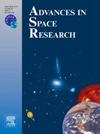An efficient hyperspectral image classification method using retentive network
IF 2.8
3区 地球科学
Q2 ASTRONOMY & ASTROPHYSICS
引用次数: 0
Abstract
In recent computer vision tasks, the vision transformer (ViT) has demonstrated competitive ability. However, ViT still has problems: the computational complexity of the self-attention layer leads to expensive and slow interference, and processing all tokens for high-resolution images may slow down due to the layer’s quadratic complexity. Recently, a retentive network with excellent performance, training parallelism, and an inexpensive inference cost was proposed. For hyperspectral image (HSI) classification, this paper proposes a retention-based network model called the HSI retentive network (HSIRN). The proposed model allows memory usage independent of the token’s sequence, facilitating the efficient processing of high-resolution images with low inference and computational costs. Although the retention encoder can extract global data, it pays limited attention to local data. A powerful tool for extracting local information is a convolutional neural network (CNN). The proposed HSIRN model uses a specific CNN-based block to extract local spectral-spatial information. To maintain degradation between successive vertical and horizontal positions with the depth dimension of the HSI, we propose a three-dimensional retention mechanism for the three-dimensional HSI dataset in the retention encoder. By efficiently using both local and global spectral-spatial information, the proposed method offers a potent tool for HSI classification. We evaluated the classification performance of the proposed HSIRN approach on four datasets through comprehensive examinations, and the results demonstrated its superiority over state-of-the-art methods. At https://github.com/RajatArya22/HSIRN, the source code will be available to the public.
求助全文
约1分钟内获得全文
求助全文
来源期刊

Advances in Space Research
地学天文-地球科学综合
CiteScore
5.20
自引率
11.50%
发文量
800
审稿时长
5.8 months
期刊介绍:
The COSPAR publication Advances in Space Research (ASR) is an open journal covering all areas of space research including: space studies of the Earth''s surface, meteorology, climate, the Earth-Moon system, planets and small bodies of the solar system, upper atmospheres, ionospheres and magnetospheres of the Earth and planets including reference atmospheres, space plasmas in the solar system, astrophysics from space, materials sciences in space, fundamental physics in space, space debris, space weather, Earth observations of space phenomena, etc.
NB: Please note that manuscripts related to life sciences as related to space are no more accepted for submission to Advances in Space Research. Such manuscripts should now be submitted to the new COSPAR Journal Life Sciences in Space Research (LSSR).
All submissions are reviewed by two scientists in the field. COSPAR is an interdisciplinary scientific organization concerned with the progress of space research on an international scale. Operating under the rules of ICSU, COSPAR ignores political considerations and considers all questions solely from the scientific viewpoint.
 求助内容:
求助内容: 应助结果提醒方式:
应助结果提醒方式:


